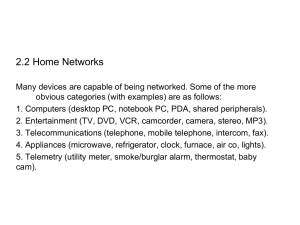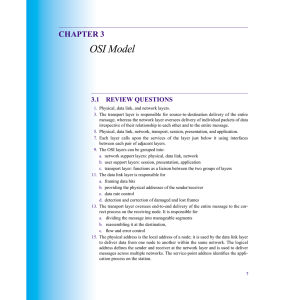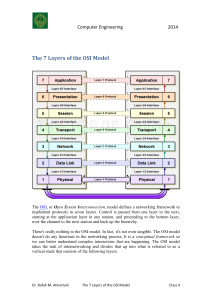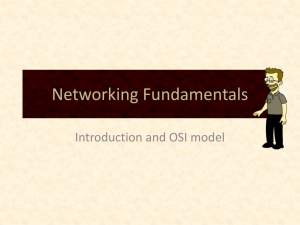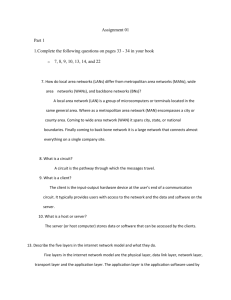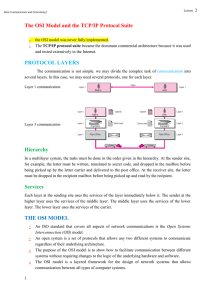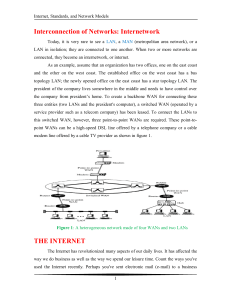OSI Network Model Layers Devices Description
advertisement
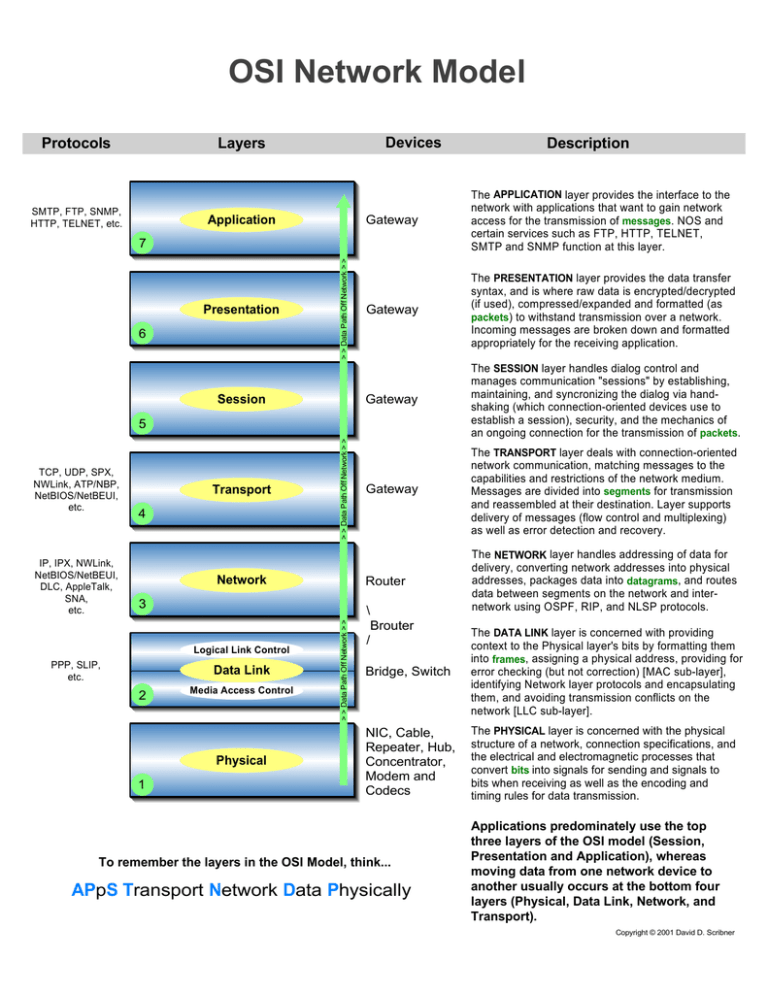
OSI Network Model Protocols Devices Layers SMTP, FTP, SNMP, HTTP, TELNET, etc. Application Gateway The APPLICATION layer provides the interface to the network with applications that want to gain network access for the transmission of messages. NOS and certain services such as FTP, HTTP, TELNET, SMTP and SNMP function at this layer. Gateway The PRESENTATION layer provides the data transfer syntax, and is where raw data is encrypted/decrypted (if used), compressed/expanded and formatted (as packets) to withstand transmission over a network. Incoming messages are broken down and formatted appropriately for the receiving application. Gateway The SESSION layer handles dialog control and manages communication "sessions" by establishing, maintaining, and syncronizing the dialog via handshaking (which connection-oriented devices use to establish a session), security, and the mechanics of an ongoing connection for the transmission of packets. Gateway The TRANSPORT layer deals with connection-oriented network communication, matching messages to the capabilities and restrictions of the network medium. Messages are divided into segments for transmission and reassembled at their destination. Layer supports delivery of messages (flow control and multiplexing) as well as error detection and recovery. Router The NETWORK layer handles addressing of data for delivery, converting network addresses into physical addresses, packages data into datagrams, and routes data between segments on the network and internetwork using OSPF, RIP, and NLSP protocols. 6 > > Data Path Off Network > > 7 Presentation Session 4 Network 3 \ Logical Link Control PPP, SLIP, etc. Data Link 2 Media Access Control Physical 1 > > Data Path Off Network > > IP, IPX, NWLink, NetBIOS/NetBEUI, DLC, AppleTalk, SNA, etc. Transport > > Data Path Off Network > > 5 TCP, UDP, SPX, NWLink, ATP/NBP, NetBIOS/NetBEUI, etc. Description Brouter Bridge, Switch The DATA LINK layer is concerned with providing context to the Physical layer's bits by formatting them into frames, assigning a physical address, providing for error checking (but not correction) [MAC sub-layer], identifying Network layer protocols and encapsulating them, and avoiding transmission conflicts on the network [LLC sub-layer]. NIC, Cable, Repeater, Hub, Concentrator, Modem and Codecs The PHYSICAL layer is concerned with the physical structure of a network, connection specifications, and the electrical and electromagnetic processes that convert bits into signals for sending and signals to bits when receiving as well as the encoding and timing rules for data transmission. / To remember the layers in the OSI Model, think... APpS Transport Network Data Physically Applications predominately use the top three layers of the OSI model (Session, Presentation and Application), whereas moving data from one network device to another usually occurs at the bottom four layers (Physical, Data Link, Network, and Transport). Copyright © 2001 David D. Scribner


